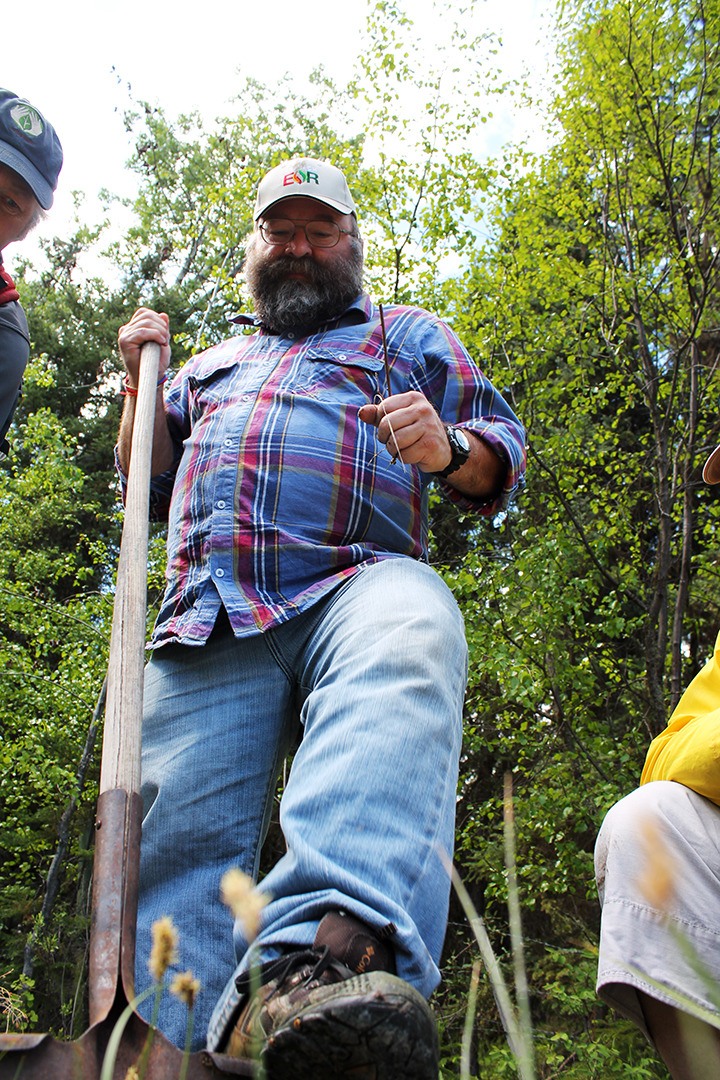The damaging effects of off-road motorized vehicles are continuing to take a toll on Lake Enid, and Wildsight fought back again with restoration work on Sunday, June 7th.
During the Lake Enid Work Party, members of Wildsight were joined by Randy Harris, a professional forester who’s been with the provincial government since 1976. He spoke about off-road vehicles causing habitat loss in areas like Lake Enid, and the growing need for restoration efforts.
“Lake Enid is a really good educational tool in a lot of ways. Because it’s been so heavily damaged by off-road vehicles, it’s such a good example of what can go wrong,” said Andrea Smillie, outreach co-ordinator for Wildsight. “It’s so close to the community, it’s a good way of teaching people what’s going on.”
Joined by local high school students, the group then headed into the bush with dozens of seedlings native to the local ecosystem — clippings from four species of plants were collected by the leadership class from David Thompson Secondary School last fall, which were brought back to the school.
“They took rooting hormone, planted them in dirt plugs over the winter, kept them in the [Groundswell Network Community] Greenhouse, and most of them started rooting,” Ms. Smillie said. “The part that was cut started growing roots.”
The types of native plants reinforced in the habitat were snowberry, red osier dogwood, willow, and water birch.
Ms. Smillie said Wildsight’s end goal is to have marked trails for hikers and off-road motorists.
“Trails that won’t cross through the lake, but will protect all the species that use the riparian zone.”
And if the organization receives sufficient funding, cleaning, seeding, and planting events will be planned in the fall. Wildsight also has its sights set on installing interpretive signs this summer, although the process is fraught with administrative obstacles.
“Hopefully the lake is going to be more accessible for families — not just people on their quads,” Ms. Smillie said.
